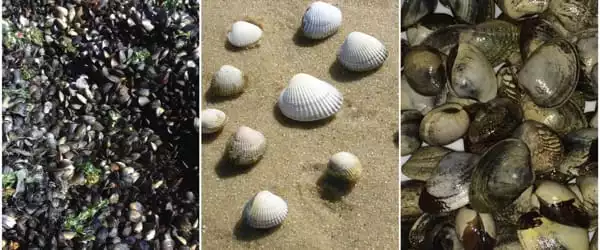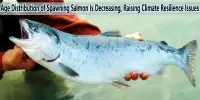The ocean is teeming with life, including a plethora of pathogens ranging from bacteria that thrive on coral to fungi that infect lobsters. A drop of seawater can contain up to ten million viruses. A group of scientists recently discovered a terrifying member of this zoo: free-floating cancer cells that cause contagious tumors in shellfish.
According to a study published in eLife, a contagious blood cancer jumped from one species of clam to another and spread among clams living in the Atlantic Ocean and Mediterranean Sea. The findings add to evidence that cancers can spread among different species of bivalve shellfish and imply that human activities may be unintentionally contributing to the spread of these cancers to new locations and species.
Cancers that are contagious have been found in dogs, Tasmanian devils, and bivalves such as clams and mussels. These diseases typically spread among members of the same species. However, previous research has found at least two cases of contagious cancers spreading among bivalve species.
“We set out to confirm whether a leukemia-like blood cancer found in some bivalves also infects Venus verrucosa, also known as warty venus clams found in southern European seas,” says Daniel Garca-Souto, a postdoctoral researcher in genetics at the University of Santiago de Compostela — USC, Galicia, Spain, and a co-first author of the study alongside Alicia Bruzos and Seila Dia
Our findings show that contagious cancers can spread between marine clam species. Because this may pose a threat to marine ecology, we must continue to study and monitor pathogens, including cancers, to help protect these species.
José Tubo
The researchers collected 345 warty venus clams from the coasts of Spain, Portugal, France, Ireland, and Croatia. They discovered a type of blood cancer known as hemic neoplasia in warty venus clams collected from two different coastal regions of Spain. One group of infected clams was discovered along the country’s Atlantic coast, while the other was discovered more than 1,000 nautical miles away in the Mediterranean Sea.
The researchers used whole-genome sequencing to discover that cancer began in a single clam, became infectious, and spread to other warty venus clams. Cancer contained genetic sequences from both the warty venus clam and an unidentified clam species. The researchers were able to identify the mystery clam as Chamelea gallina, or the striped venus clam, by comparing the unknown genetic sequence to a genetic database of bivalve species.
Further analysis of DNA extracted from the mitochondria and nucleus of both clam species confirmed that cancer had spread from the striped venus clam to the warty venus clam.

“The genetic similarity of the cancer cells found in warty venus clams found in both the Atlantic Ocean and the Mediterranean Sea suggests that human shipping activities may have transported cancer from one region to the other,” says co-first author Alicia Bruzos, who was a Researcher Ph.D. Student at USC at the time of the study and is now at the Francis Crick Institute in London, UK. A previous study published in eLife found that mussels transported contagious cancer across the Atlantic by hitching a ride on ships.
The team now hopes to carry out further studies to determine the age of the tumors in their clam specimens and to explore how long cancer may have been spreading among these species.
“Our findings show that contagious cancers can spread between marine clam species,” says senior author José Tubo, a USC researcher in Genomes and Disease. “Because this may pose a threat to marine ecology, we must continue to study and monitor pathogens, including cancers, to help protect these species.”
They traced cancer’s origin to a single clam, which later became infectious and spread cancer to other clams around it, using genome-sequencing.
The striped venus clam, which can be found in the same areas as the warty venus, was identified as the second species of clam from which the blood cancer originated. Researchers screened an additional 200 striped venus clams from the regions and found no evidence of ongoing cancer, implying that cancer spread to warty venus and is now only active in that species. And the research indicates that this isn’t just a marine issue to be concerned about. It’s something in which we also have a say.
“The genetic similarity of the cancer cells found in warty venus clams in both the Atlantic and Mediterranean Seas suggests that human shipping activities may have transported cancer from one region to the other,” co-first author Alicia Bruzos said in a press release. She was a Ph.D. student at USC at the time of the study and now works at the Francis Crick Institute in London, UK. Scuba Cancers, an ERC starting grant project, provided the majority of the funding for the study.
















